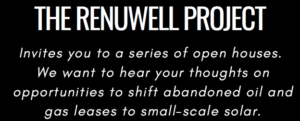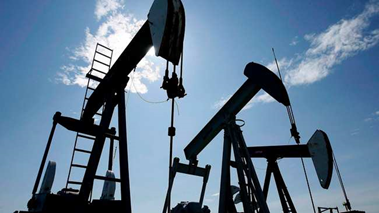By Dan Healing
The Canadian Press
Canadian Natural Resources Ltd. chairman Murray Edwards, left, prepares to address the company’s annual meeting in Calgary on May 9, 2019. The Alberta Liabilities Disclosure Project says the province’s largest oil and gas companies are underestimating how much it will cost to clean up thousands of oil and gas wells drilled over past decades.
Canadian Natural Resources Ltd. chairman Murray Edwards, left, prepares to address the company’s annual meeting in Calgary on May 9, 2019. The Alberta Liabilities Disclosure Project says the province’s largest oil and gas companies are underestimating how much it will cost to clean up thousands of oil and gas wells drilled over past decades.
An Alberta coalition that says oil and gas producers are lowballing how much it will cost to clean up their well sites is being accused by the head of the Alberta Orphan Well Association of overstating those numbers.
The Alberta Liabilities Disclosure Project, a coalition of landowners, environmentalists and others, on Thursday published a list of producer companies with estimates of how much it would cost each to remediate its Alberta oil and gas properties if the job had to be done immediately.
Those costs are much higher than the companies estimates because they are assuming they will have decades of cleanup time, the coalition said, while calling on the province to release independently verified estimates of liabilities.
“When companies report their liabilities at discounted rates, without also reporting what it would cost to do the cleanup today, it makes them look — on paper — healthier than they are,” said Regan Boychuk, the ALDP’s lead researcher.
“But their numbers assume the companies have decades they may not actually have.”
The cost estimates from the coalition seem much higher than actual costs his organization incurred to clean up 800 inactive oil and gas wells last year, said Lars DePauw, executive director of the OWA, an organization funded by industry that steps in to clean up wells when their owners either can’t or won’t.
“With all the work we did last year, the average cost on the abandonment side, or decommissioning, as we call it, was $34,000 per well and $27,000 to reclaim a site,” he said.
“I don’t know how they came up with their numbers.”
Boychuk said in an interview his group’s assumed average cleanup cost per well is $229,000, a number based on an internal Alberta Energy Regulator study obtained through freedom of information law.
The numbers given by DePauw may be accurate but they are for cleaning up “cheap, easy, quick wells,” such as shallow gas wells with no associated hazardous gases, he said.
DePauw, in response, said OWA’s job list last year included a mixture of both simple and complex wells, pointing out that the OWA did as many cleanups in one year as it has in the past 20 years.
Cleanup costs were far below targets set by the Alberta Energy Regulator, he said, thanks to growing expertise and the use of area-based programs that allow for greater efficiency.
Calgary-based Canadian Natural Resources Ltd. was singled out by the coalition as facing by far the largest bill at $11.9 billion to clean up 73,000 oil, gas and bitumen wells in Alberta.
In its news release, the coalition adds that is “more than double the $5.3 billion in worldwide asset retirement obligations reported in CNRL’s audited financial statements.”
However, in its Annual Information Form submitted to Canadian regulators in March, CNRL reports its undiscounted worldwide ARO is $12.3 billion.
When asked about that, Boychuk said the coalition worked with a U.S. specialist who consulted American regulatory filings, which didn’t include the undiscounted amount. He said many companies reduce their apparent liability by spreading it out over decades.
He said CNRL should be “applauded” for reporting the undiscounted estimate as many companies do not, but noted the number for all of the company’s assets in Africa, the North Sea and oilsands mining almost matches his group’s estimate for its Alberta wells alone.
Other companies on the coalition’s top 10 list include Husky Energy Inc. (second highest at $2.17 billion), IPC Alberta Ltd., Imperial Oil Ltd., Torxen Energy Ltd., Obsidian Energy Ltd., Cenovus Energy Ltd., Canlin Energy Corp., Paramount Resources Ltd. and Taqa North Ltd.
Husky spokesman Mel Duvall says the company used accepted industry practices to estimate its worldwide abandonment liabilities as of the end of 2018 at $2.4 billion, with the majority of those costs related to properties in Alberta and Saskatchewan.
“We take our asset retirement obligations seriously and abandon and reclaim in excess of 1,000 wells a year,” he said.
In April, the coalition estimated the total cost to clean up all of Alberta’s oil and gas wells was $40 billion to $70 billion.
In an email, the AER said its official energy cleanup estimate of $58.65 billion is split into $28.35 billion for coal and oilsands mines and $30.2 billion for oil and gas wells, facilities and pipelines.
It says the total security held for mining as of June 2018 is approximately $1.46 billion and the total for oil and gas is about $224 million.
© 2019 The Canadian Press

